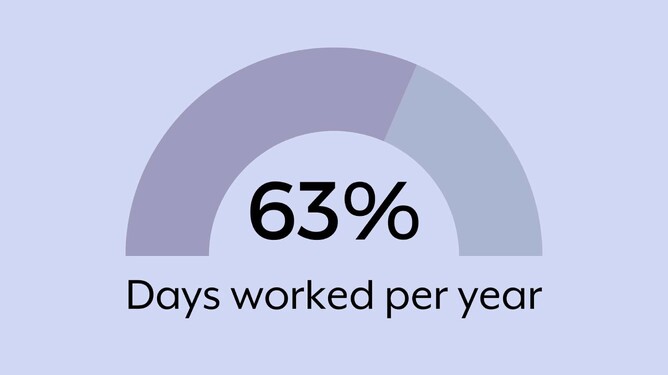Is work-life balance possible?
Throughout your working life, you’ve probably heard the phrase “work-life balance” thrown about so often you started to wonder if the words ever had any meaning.
Most people I talk to feel constantly torn when it comes to their work-life and their home-life. They want to do well and achieve highly at work, but in doing so they feel that they lose themselves (and the things they love to do) along the way.
On the weeks where they do actually take time for themselves, they’re often left feeling guilty or worried that they haven’t performed to their usual high standards at work. This causes huge frustration, and people fall into a mental loop of constantly searching for that middle-ground - where they can be a good employee and have time for leisure, recreation, self-care, stillness, socialising, and rest.
The Facts
Many, many companies say they care about the “work-life balance” of their employees, but when we look at the cold hard facts, it becomes pretty clear why so many of us feel we can never win in this constant struggle:
We work on average 228 days out of 365 in a year
By the time we've been to work for an avg of 40 hours/week, slept for an avg 49 hours/week, carried out domestic labour (cooking, cleaning, food shopping, childcare etc) for 35 hours/week, and commuted for an average of 5 hours/week, that leaves only 18% of our time to spend on those all important rest and wellbeing activities.
Actual stats suggest the average worker in the UK spends 1532 hours per year at work (due to longer work weeks but more holiday days) compared to Aotearoa New Zealand where workers work shorter hours per week, but more days for a total of 1748 hours per year.
5 days out of 7 we have double the time working than time for leisure/recreation, not accounting for commute, necessary caretaking activities etc.
For parents, carers, healthcare and public service professionals, anyone who works more than a standard 40 hour week, people who have a long commute, shift workers, or a myriad of other scenarios, time for themselves falls even further.
So, if the traditional working week is set up so that we spend way more hours working than we do on wellbeing, other than quitting or going part-time, how can we reclaim time back for ourselves? How can we reclaim time to do what fills our cup, rather than drains us?
The Ideal Week
The solution is to be intentional, open to options, and to be realistic about where we are willing to compromise and where we are not. This is most definitely not a one-size fits all solution – what works for you and your lifestyle may not work for your partner, friend, loved-one, or colleague. One coaching activity which can help is to actually plan out your week. This can be done with as much or as little detail as you like - some people like to plan to the minutes, and other people will separate their days into larger units of time e.g. morning, afternoon etc.
This is the process:
On a spreadsheet, notebook, or blank piece of paper, lay out your week in blocks of time that work for you (if you work shift patterns you can do one for each week of your rota).
Firstly, put in the activities you can’t control – sleeping, eating, your work hours, your commute, your kids’ school run etc.
Colour code the activities in a way that makes sense to you.
Then, take a look at how much time has been filled – what stands out to you? Do you have more leisure time than expected, or less?
Now add in the other activities you do that you have more control over – take a step back and see, once again, what stands out to you now.
List out (in order of importance to you) the activities that you would like to have as part of your week. This does not have to be realistic – this is magic wand time! If you had all the time and money in the world, what would you do?
Now, time to start designing your ideal week…..
Go back, and add in those idealistic things in a way that makes sense to you – you could make a copy of the first version and then remove the activities you no longer want as part of your week, cross through them, or stick a label over them.
Once you’ve constructed your ideal week, step back for a third time and take a look at it. How do you feel when you see it? What are the parts of your week where you feel most conflict?
Now time to get creative – what are the options to move the needle towards your ideal week, and away from where you feel stuck and constrained. You can go as big or as small as you like with these.
What to do with your ideal week
The options you come up with will be, like you, extremely individual. You may see some obvious compromises you’re willing to make, or some easy wins that wouldn’t take much effort to implement. Or, you may feel like you have no idea where to start in making the changes you intuitively feel would be of huge benefit to you.
As with all coaching activities, the magic happens in the reflection, the processing, and learning to embody who we want to be to serve ourselves in the situations that are challenging us.
If you’d like to learn more about this, or want the chance to chat through the realisations you’ve had after completing this activity, I’d love to support you as you take your next steps towards wellness and balance in your life, not just your work.



